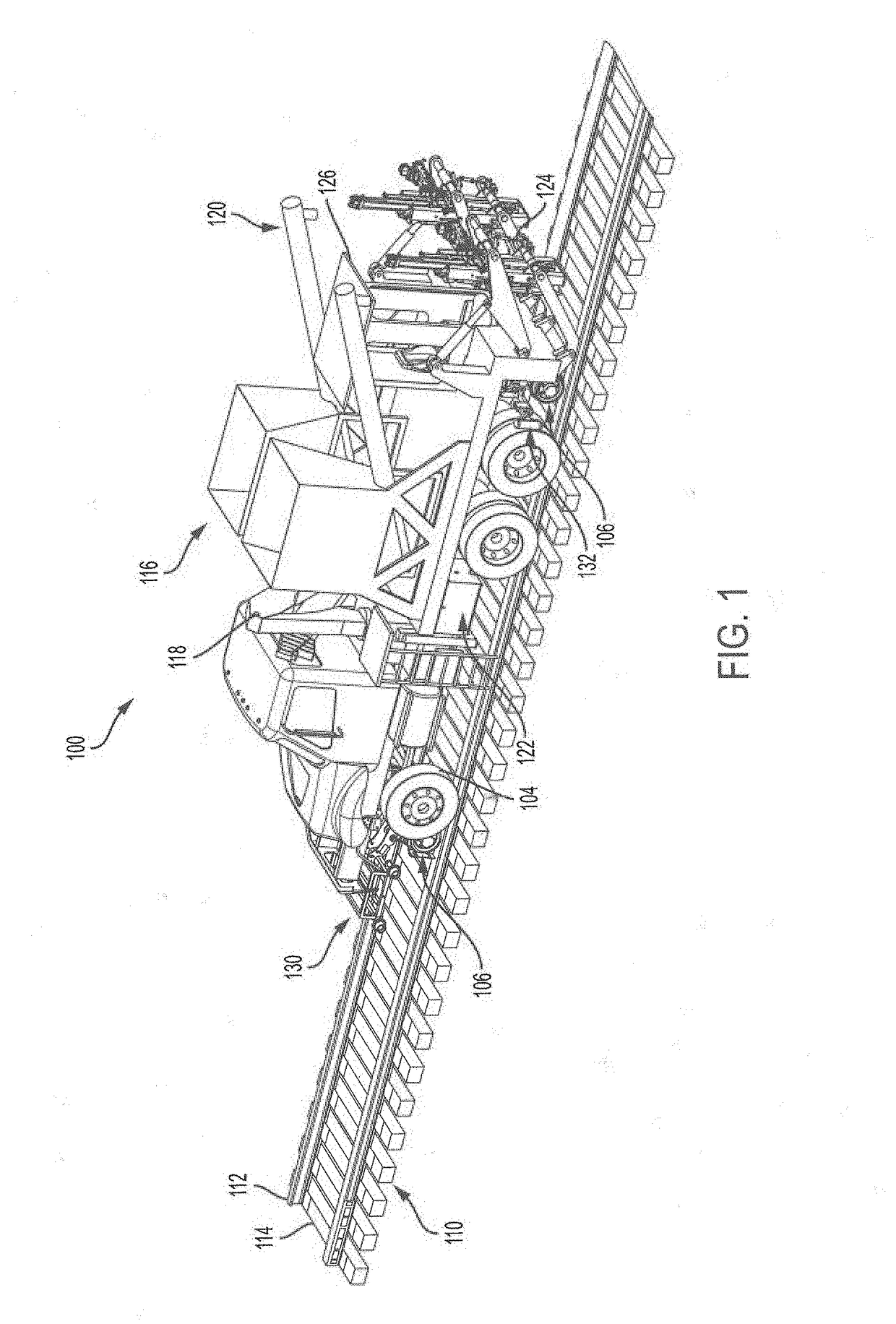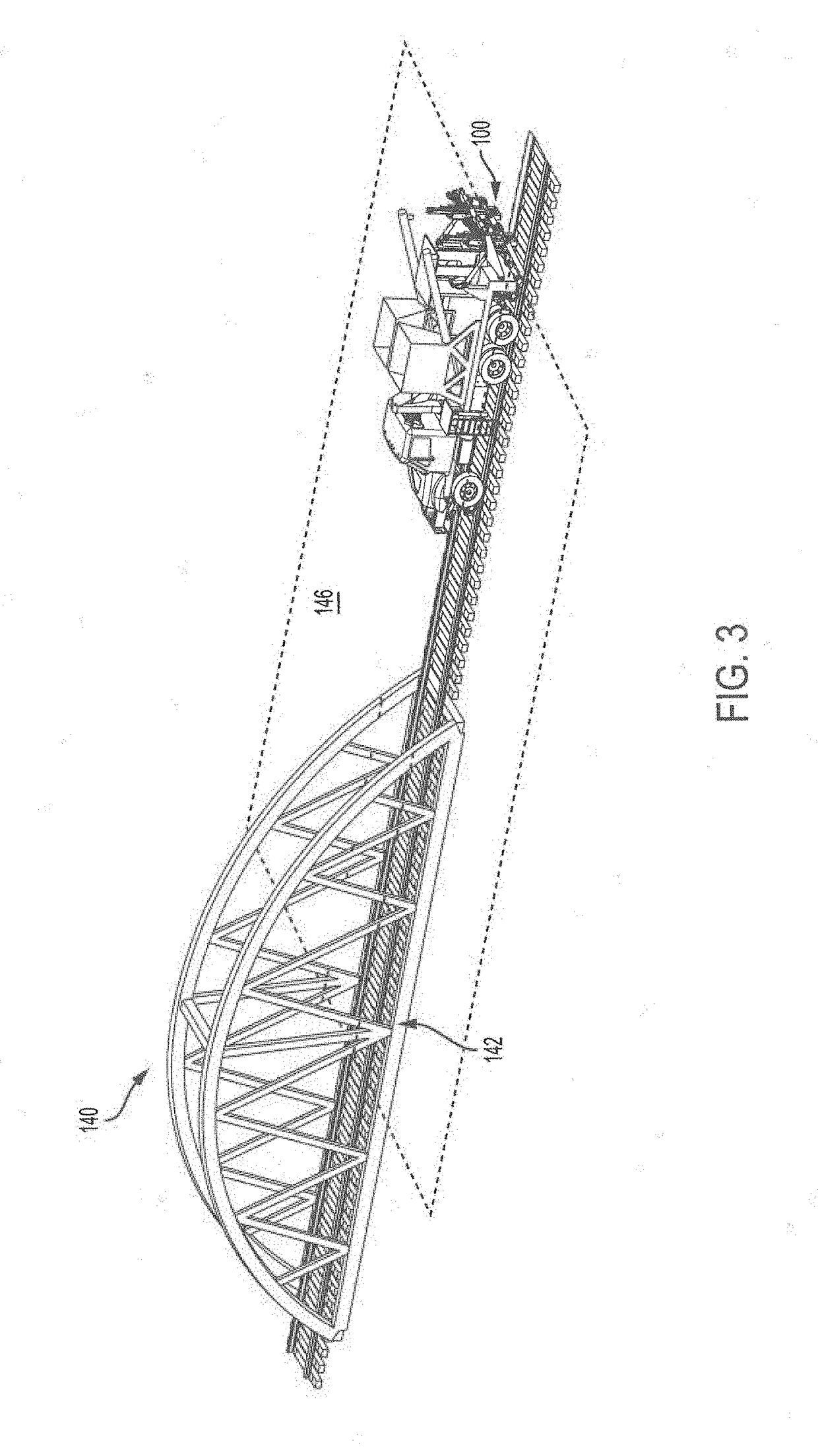Road rail stoneblower
a road rail and stoneblower technology, applied in the field of road rail stoneblowers, can solve the problems of voids or gaps under rail ties, stoneblowers have some drawbacks, and the traditional method of fixing voids that appeared under rail ties was labor and time-consuming, so as to improve the alignment of railroad tracks
- Summary
- Abstract
- Description
- Claims
- Application Information
AI Technical Summary
Benefits of technology
Problems solved by technology
Method used
Image
Examples
Embodiment Construction
[0025]Various embodiments of a road rail stoneblower are described according to the present disclosure. It is to be understood, however, that the following explanation is merely exemplary in describing the devices and methods of the present disclosure. Accordingly, several modifications, changes, and substitutions are contemplated.
[0026]In an embodiment, and as shown in FIG. 1 and FIG. 2, a road rail stoneblower is depicted having reference numeral 100. The road rail stoneblower 100 may include a chassis 102 configured for operating on both paved or unpaved road surfaces and railroad tracks. For example, the road rail stoneblower 100 may include a first set of wheels 104 configured for traveling on road surfaces as well as a second set of wheels 106 configured for traveling on top of railroad tracks. In this manner, the road rail stoneblower 100 may embody a highway-rail or “hi-rail” vehicle.
[0027]As described throughout, an underlying railroad track 110 may include a pair of elonga...
PUM
 Login to View More
Login to View More Abstract
Description
Claims
Application Information
 Login to View More
Login to View More - R&D
- Intellectual Property
- Life Sciences
- Materials
- Tech Scout
- Unparalleled Data Quality
- Higher Quality Content
- 60% Fewer Hallucinations
Browse by: Latest US Patents, China's latest patents, Technical Efficacy Thesaurus, Application Domain, Technology Topic, Popular Technical Reports.
© 2025 PatSnap. All rights reserved.Legal|Privacy policy|Modern Slavery Act Transparency Statement|Sitemap|About US| Contact US: help@patsnap.com



